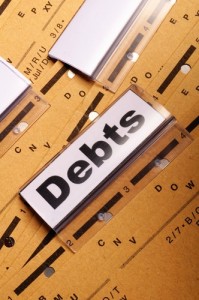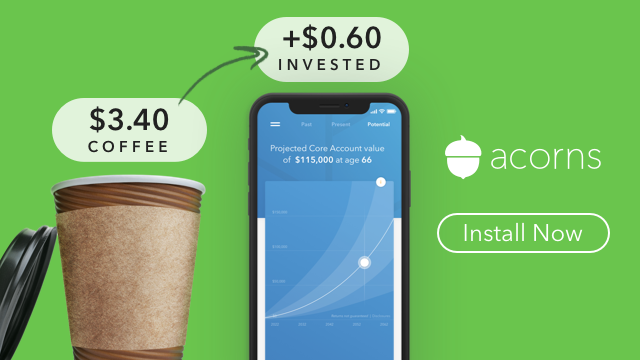6 Tips - Good Debt vs. Bad Debt
What is the difference between good debt and bad debt?
While it is near impossible for people in the western world to live completely free of debt, there are some big differences between the type of investments which are believed to be ‘good debt’ and those which are believed to be ‘bad debt.’ In reality, the distinctions are not always as clear as we would perhaps prefer, and there are some forms of debt which fall into a bit of a grey area, but in theory, there are some types of debt which it is good to accrue.
The most basic distinction between good debt and bad debt is the fact that good debt pertains to items which are needed and have possible positive financial ramifications and bad debt describes investments which are entirely based on desire. This latter category typically includes things like expensive holidays, jewelry, short term loans, and bad debt credit cards, because they do not typically involve any future appreciation in value.
To fully understand the difference between good debt and bad debt then, it is necessary to take an honest look at the concepts of want and desire. Similarly, it is important to consider, when accruing any kind of debt, what type of impact it might later have on your overall financial situation. For many, the realization that debt does not have to be a negative thing is an essential life lesson.
This handy guide to the most common forms of good and bad debt will help you learn how to distinguish between the two.
What constitutes good debt?
School Loans –
When it comes to school loans like university tuition loans, it is rare for this kind of debt to be considered a negative attribute. This is because, on the whole, graduates tend to secure the best jobs and end up making more money than those who choose not to attend university. So, school loans are considered to be a positive investment, because they are expected to appreciate in value over time. The same rules apply to parents who take out loans to pay for education for their children.
Healthcare Costs –
A similar situation applies to healthcare costs, despite the fact that a whopping 60% of bankruptcy cases in the US are associated with unpaid medical fees. The good news is that, in the eyes of credit experts, there are few causes as worthy of the term ‘good debt’ as keeping a family member healthy. The bottom line is that loans can be repaid, but human losses cannot. If you are in serious need of a loan to pay for essential healthcare costs, you should not spend too much time thinking about the impact of this debt on your financial situation.
Mortgage Payments –
It can be very intimidating to ask for a loan which is sizable to cover the cost of a house, but purchasing a property is a form of investment which is almost certain to appreciate in value. The interesting point to make is that, whilst it can seem like a more sensible decision to work up enough liquid cash to provide a down payment (this does reduce any interest fees), a move like this can actually end up working against homeowners. As this kind of debt is considered to be a responsible move on the part of trustworthy adults, it has no negative impact on credit scores.
What is a bad debt?
Credit Card Purchases –
The typical family in the United States now owns over $10,000 worth of debt on bad credit card loans alone. In fact, this kind of debt can accumulate extremely quickly, because it is usually used to purchase items of desire and not need. The psychology of paying for products with a credit card says that purchases are not as serious, because no actual money is being handed over. Of course, the reality of the situation soon hits home when the bills arrive. The interest fees associated with most credit cards are very high, so it is best to avoid these bad debt loans wherever possible. The really bad debt credit cards will have interest rates over 20%.
401K Loans –
If you lend money from your 401K, you are expected to handle your affairs in accordance with IRS regulations. These regulations state that, if you are not planning to use the cash to purchase a property, the full balance must be repaid within a five year period. For those who fail to pay the sum back in its entirety, serious cash penalties will apply. Plus, borrowing money from a 401K can put your retirement fund in serious danger, so this approach is certainly not advised by financial experts and specialists.
Expensive Possessions –
There is an easy rule of thumb to use when considering whether a purchase constitutes good or bad debt. It is the simplest rule of all; if you do not need it and you do not have the liquid cash to pay for it, you are probably better off without it. In fact, things like expensive holidays, designer clothes, luxury car debt, and jewelry are almost always considered to be bad debt. There really is no excuse for getting into financial trouble as a result of ill-advised luxury spending.
How do I live a life free from bad debt?
While it is true that modern life forces most people to lend money and accrue debt at some point in their lives, knowing how to distinguish between good and bad debt can make a huge difference to financial health. The basic rules remain the same, for the most part – try to avoid debt which you know that you cannot comfortable pay back, do not give in to the temptation to buy expensive possessions with money that you do not have, and always remember the difference between want and need.
The most important thing to remember when asking ‘Are loans bad?’ is that debt does not have to be a scary or intimidating concept. If it is treated with respect and care, it can actually end up having a positive impact on your life. If you do end up getting into trouble with bad debt, do not forget that it is never too late to seek advice and turn things around.
 Follow
Follow
